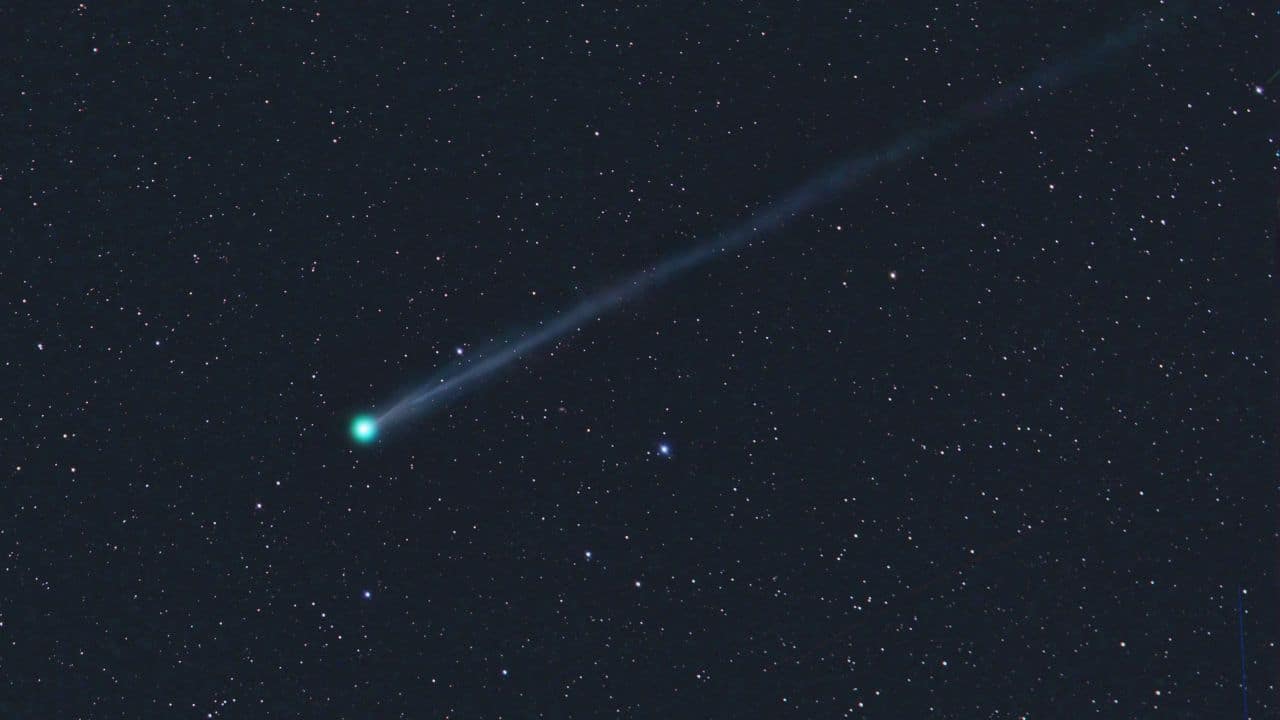Recently, early morning has a quietly magical feel to it. Comet SWAN25F is a new comer that can be seen moving smoothly across the horizon shortly before sunrise. It may soon offer a better show, but until then you will have to use binoculars.
Sun-Watching Spacecraft Spot Comet It was first seen by the European Space Agency's SOHO satellite. It was detected by its SWAN sensor, which tracks solar activity. The visible sighting was reported by Australian amateur astronomer Michael Mattiazzo.

He spotted a definite comet shape in SOHO's latest images on April 1. The comet was later given the formal name SWAN25F in consequence. The glowing object is like a small green orb.
That green color implies that diatomic carbon molecules in its coma are present. They react and glow green in the presence of sunlight to naked eyes. Where and How to Look for It Attempt to glimpse the comet just before daybreak.
Low in the horizon, look east-northeast. It takes binoculars or a small telescope since it is now faint. But the radiance is increasing day by day.
The comet will reach as close as it can to the sun and Earth by May 1. It will pass within 31 million kilometers of the sun. That is just inside Mercury's normal orbit.
At that time, it may brighten up to magnitude 4.5 or 5. However it could also lie low enough in the horizon that it will be quite difficult to see.
From the Morning Sky to the Evening Light The comet can switch skies if it manages to survive its close encounter with the sun. During the first week of May, it could be seen at sunset. If you look night-to-night, you might find that it is moving rapidly.
In early April, SWAN25F passed through the Flying Horse constellation Pegasus. It is now bound for Andromeda. The comet will be near the star Alpheratz or Alpha Andromedae by April 13.
Use this bright star to trace the comet's path. Hiding behind the green sheen is a thin tail that can be detected in long-exposure images. In the atmosphere, the tail is wider than the moon by more than twice its diameter.
From existing magnitude records, brightness is ranging between 7.5 and 8. And as the comet approaches the sun, it is getting better day by day.
Watch the Sky in the Coming Weeks Comets are famous for being unpredictable. SWAN25F could surprise us all, twinkle, or burn out. For the time being, however, it's a rare chance to witness a new comet speeding across the sky.
Grab your binoculars and venture out before the sun rises, early birds. Tune in for more news as the comet draws near its dramatic encounter with the sun..
















